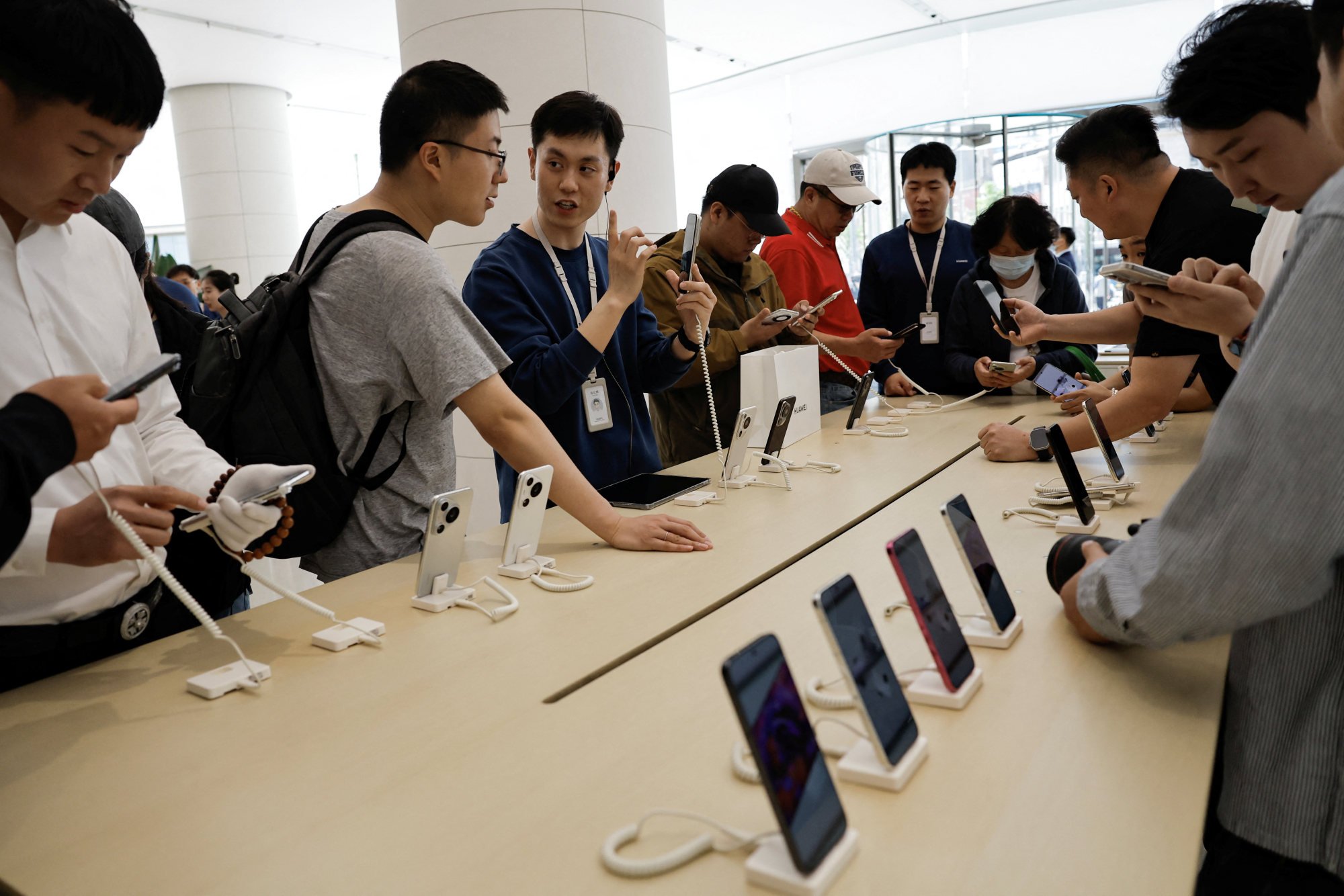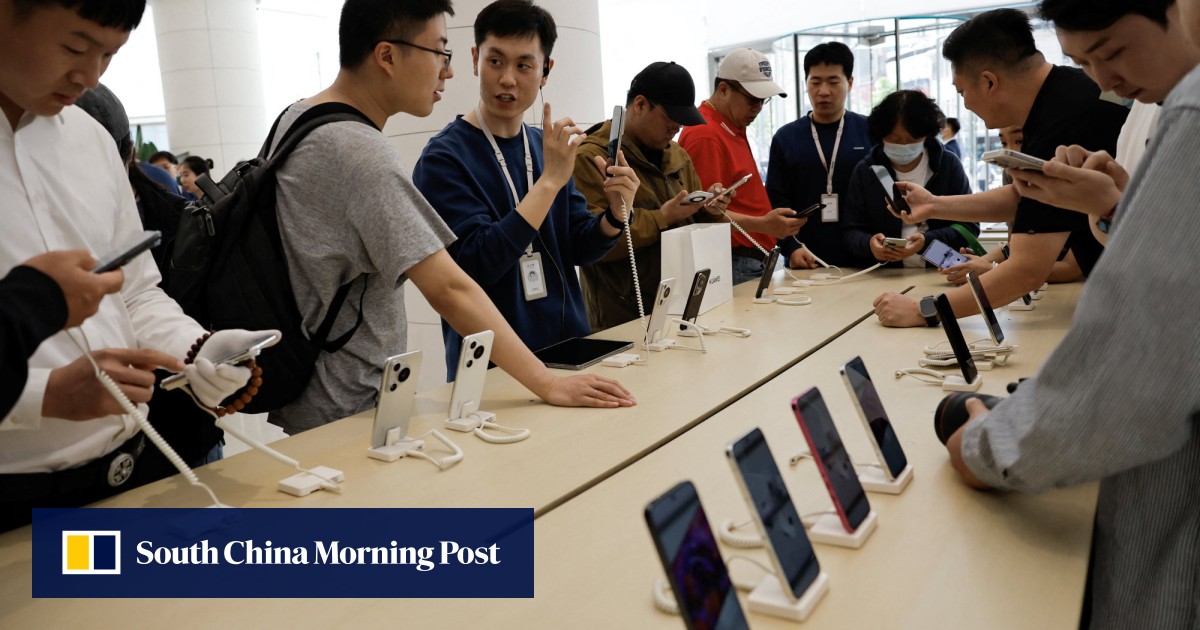Huawei announced two models for sale on Thursday, the Pura 70 Ultra and Pura 70 Pro, while the Pura 70 Pro+ and Pura 70 will be available starting April 22.
Huawei did not reveal details of the processors that power the Pura 70 series, but analysts believe the new line will use the company’s own Kirin chips. The Pura series was renamed from the P series in a rebranding effort earlier this week.
Pura 70 Ultra, the high-end model with a price starting at 9,999 yuan (US$1,382), and Pura 70 Pro, priced from 6,499 yuan, have already sold out on Huawei’s online store, while some units are still available for purchase at its bricks-and-mortar shops.
Apple loses top smartphone maker spot to Samsung as iPhone shipments drop, IDC says
Apple loses top smartphone maker spot to Samsung as iPhone shipments drop, IDC says
For offline purchases at Huawei’s flagship stores, consumers had to show up in person and line up for a reservation before buying, according to a saleswoman at the company’s store in Shenzhen. Some models, such as the 512GB Pura 70 Ultra, had already run out of stock before noon, she added.
The Pura 70 launch generated strong interest on Chinese social media, topping the trending topic chart on popular microblogging site Weibo on Thursday morning, with some users posting photos of their purchases and the long queues outside Huawei’s physical stores.
The release of the new models has been closely watched by the industry, as it represents Huawei’s biggest flagship handset launch since the Mate 60 Pro in August 2023, which generated attention around the world for its use of a Chinese-made processor.
Huawei was added to a US trade blacklist in May 2019, forcing the former smartphone leader to skip some planned product launches, severely hobbling its once-lucrative handset business. However, Huawei announced last year that it would resume launches for its flagship smartphone brands, the Mate and P series.

The Shenzhen-based company has traditionally unveiled new flagship gadgets at its major spring and fall launch events. But last August, the tech giant quietly released what was its first 5G handset in three years, the Mate 60 Pro, without any advance notice. It did not introduce the Mate 60 series at later events, either, maintaining strict silence on the origin of its in-house chipset.
Huawei’s consumer business, including its smartphones and co-developed Aito electric cars, recorded a 17.3 per cent increase in revenues to 251.5 billion yuan in 2023, marking the first growth posted for that segment since 2021, after Washington tightened its restrictions on Huawei’s access to advanced semiconductor technology.
China’s OnePlus faces rising complaints in India as it tries to maintain grip
China’s OnePlus faces rising complaints in India as it tries to maintain grip
While the Mate series targets working professionals, the former P series was aimed at younger users with a greater focus on camera functionality. The P60 Pro, launched in March last year, was a 4G phone running on Qualcomm’s Snapdragon 8+ Gen 1 chipset and Huawei’s HarmonyOS operating system.
Separately, Huawei is planning to release HarmonyOS Next, the major upgrade to its home-grown alternative to the Android operating system, with the upcoming Mate 70 flagship smartphone series later this year, rotating chairman Eric Xu Zhijun said on Wednesday.
At that time, HarmonyOS Next will no longer support Android-based applications, as Huawei accelerates native development and expands the ecosystem. It is also working with major Chinese tech companies including Alibaba Group Holding and Meituan to develop native apps for the OS. Alibaba owns the South China Morning Post.
Huawei will introduce 5,000 apps for HarmonyOS and plans to grow the number to 1 million, Xu said at the company’s analysts conference. “We will work hard to build up the HarmonyOS app ecosystem in the China market first, then … we will start gradually pushing it out to other parts of the world.”

